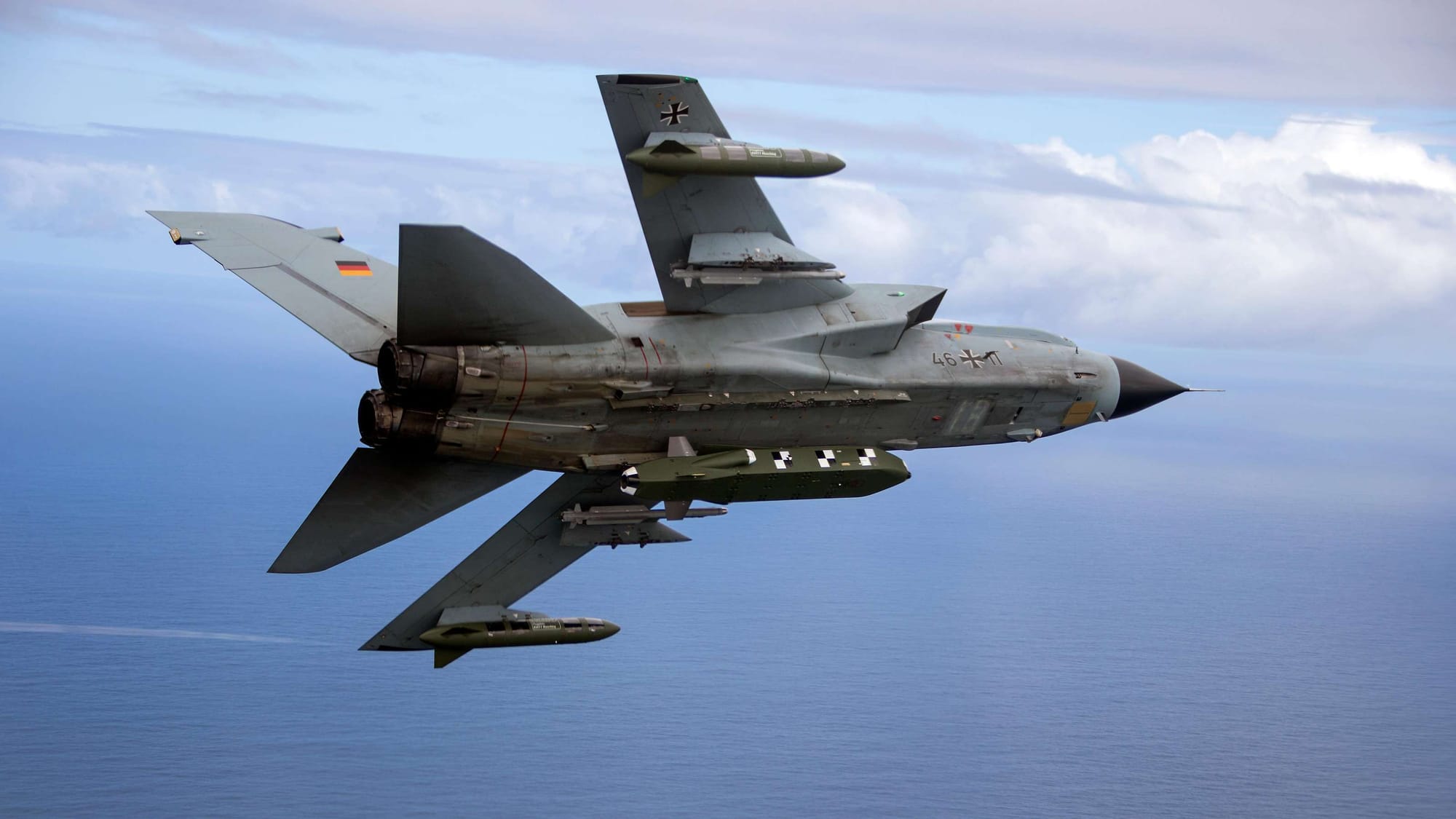Großwald Systems: IRIS-T SLM - Surface-to-Air Missile Systems
The IRIS-T SLM (Infra-Red Imaging System – Tail/Thrust Vector-Controlled, Surface-Launched Medium Range) is a medium-range surface-to-air missile system developed by the German company Diehl Defence.

Welcome to Großwald Systems, your definitive source for insights into the world’s most advanced defense systems. In this edition, we spotlight the IRIS-T SLM, a cutting-edge surface-to-air missile system securing airspace worldwide. From its innovative technology to its critical applications, the IRIS-T SLM exemplifies modern defense excellence.
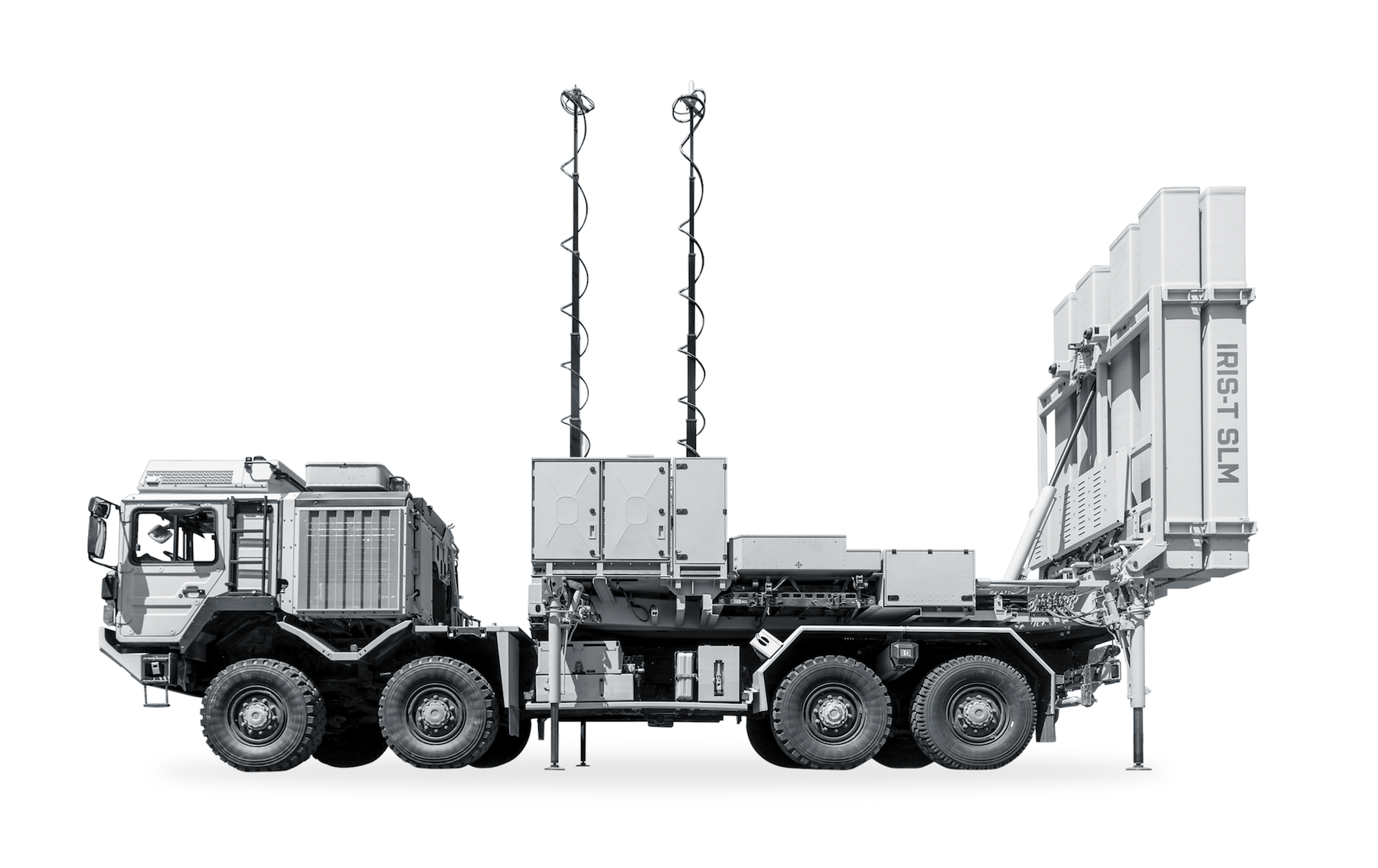
Nations require advanced systems to protect their airspace from emerging threats. Among the most sophisticated solutions is the IRIS-T SLM (Infra-Red Imaging System – Tail/Thrust Vector-Controlled, Surface-Launched Medium Range), an advanced surface-to-air missile (SAM) system that exemplifies the pinnacle of modern defense technology. Designed to counter diverse aerial threats, the IRIS-T SLM plays a crucial role in safeguarding national security.
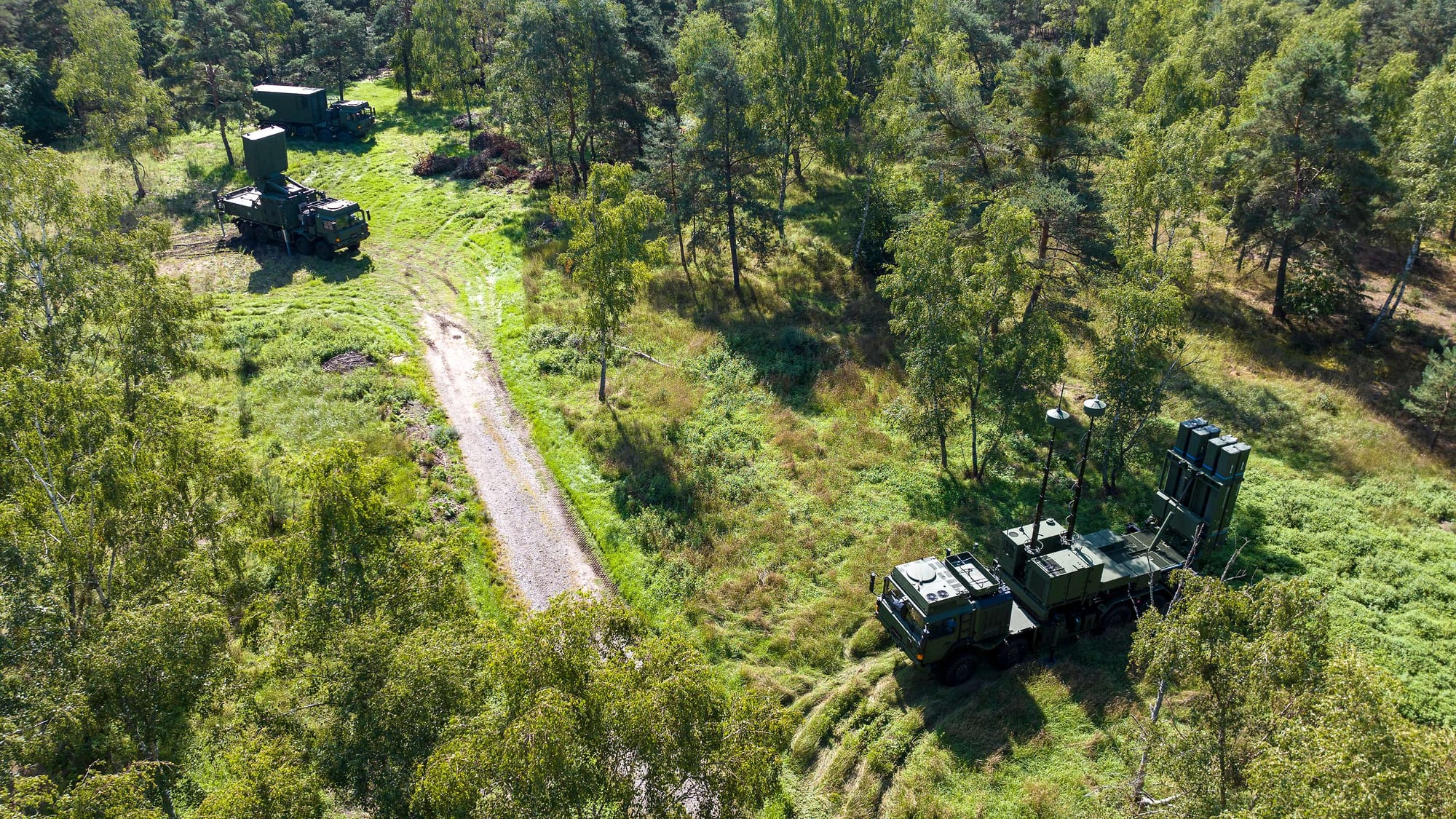
What is the IRIS-T SLM Surface-to-Air Missile System?
The IRIS-T SLM (Infra-Red Imaging System Tail/Surface-Launched Medium-range) is a medium-range surface-to-air missile system developed by the German defense company Diehl Defence. An extension of the widely acclaimed IRIS-T air-to-air missile, this system addresses contemporary and future threats such as fighter jets, helicopters, drones, and cruise missiles.
The IRIS-T SLM offers a robust defense solution with the following features:
- Multi-target capability: The system can engage multiple threats simultaneously.
- All-weather operation: Advanced sensors ensure effectiveness in diverse weather conditions and environments.
- High accuracy: Infrared imaging and advanced guidance systems provide exceptional precision.
- Scalability: Its modular design allows integration into existing air defense networks.
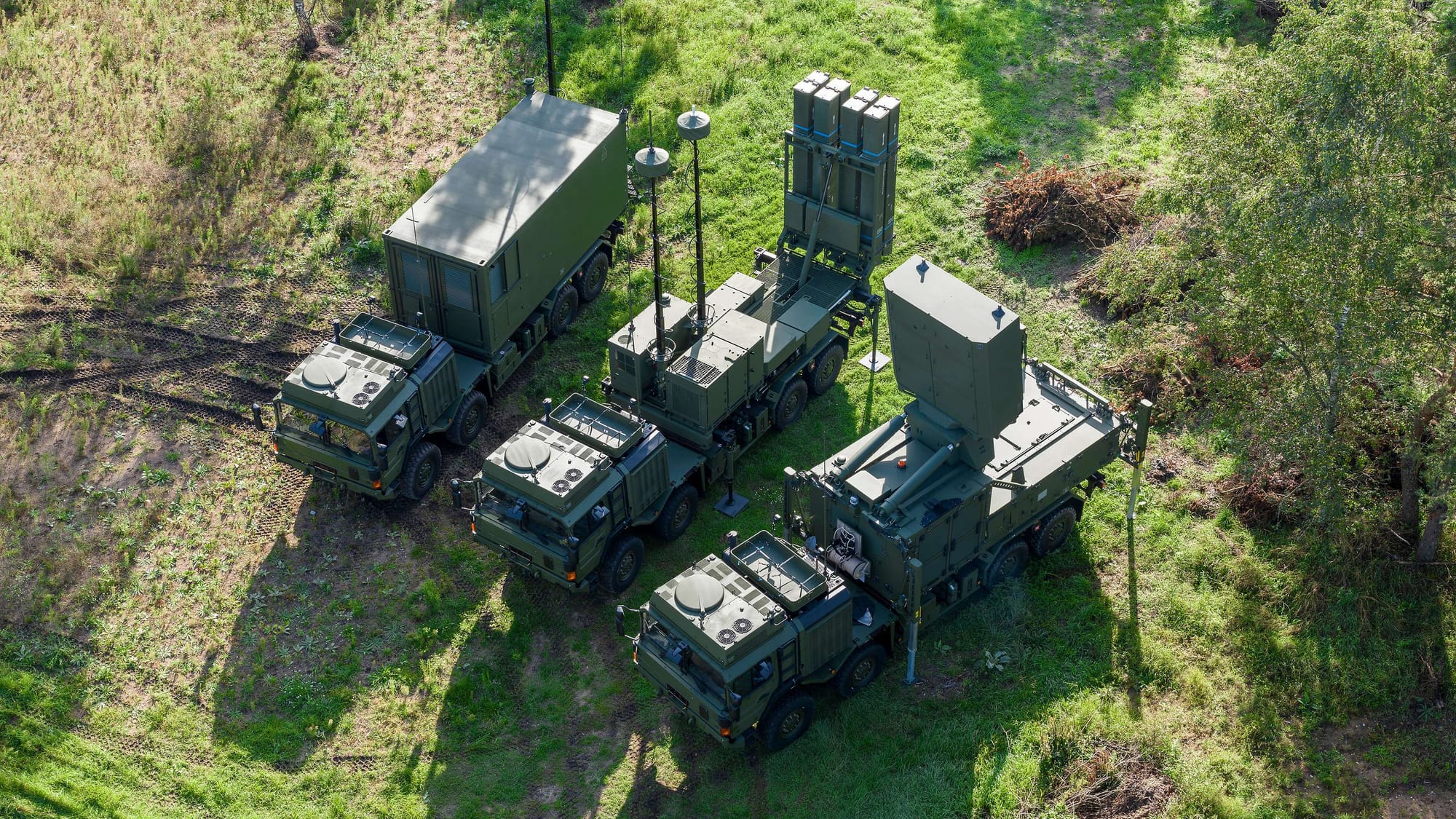
IRIS-T SLM: Key Specifications:
- Missile Dimensions:
- Length: 2.94 meters
- Diameter: 152 millimeters
- Weight: 87.4 kilograms
- Performance:
- Range: Up to 40 kilometers
- Maximum Altitude: 20 kilometers
- Speed: Over Mach 3
- Warhead:
- Type: High-explosive fragmentation
- Weight: 11.4 kilograms
- Guidance System:
- Mid-Course: GPS/INS navigation with radio frequency (RF) data link for target updates
- Terminal Phase: High-precision passive infrared seeker for increased countermeasure resistance and accuracy
- Launcher Configuration:
- Typically mounted on a MAN SX45 8x8 truck chassis
- Equipped with eight missile container launchers arranged in two banks of four
- Missiles are launched vertically, providing rapid 360° engagement capability
- System Components:
- Launcher Vehicles: Each carrying eight ready-to-launch missiles
- Multifunction Radar: For target detection and tracking; examples include the HENSOLDT TRML-4D radar
- Command Post Vehicle: Equipped with Integrated Battle Management Software for fire control and mission planning
- Deployment:
- Suitable for both mobile and stationary operations
- Capable of rapid deployment and high firing rates with quick response times
- Operational Use:
- Provides simultaneous engagement of multiple targets
- Effective in all weather conditions and resistant to electronic countermeasures
- Designed to intercept a wide range of aerial threats, including low-flying and maneuverable targets
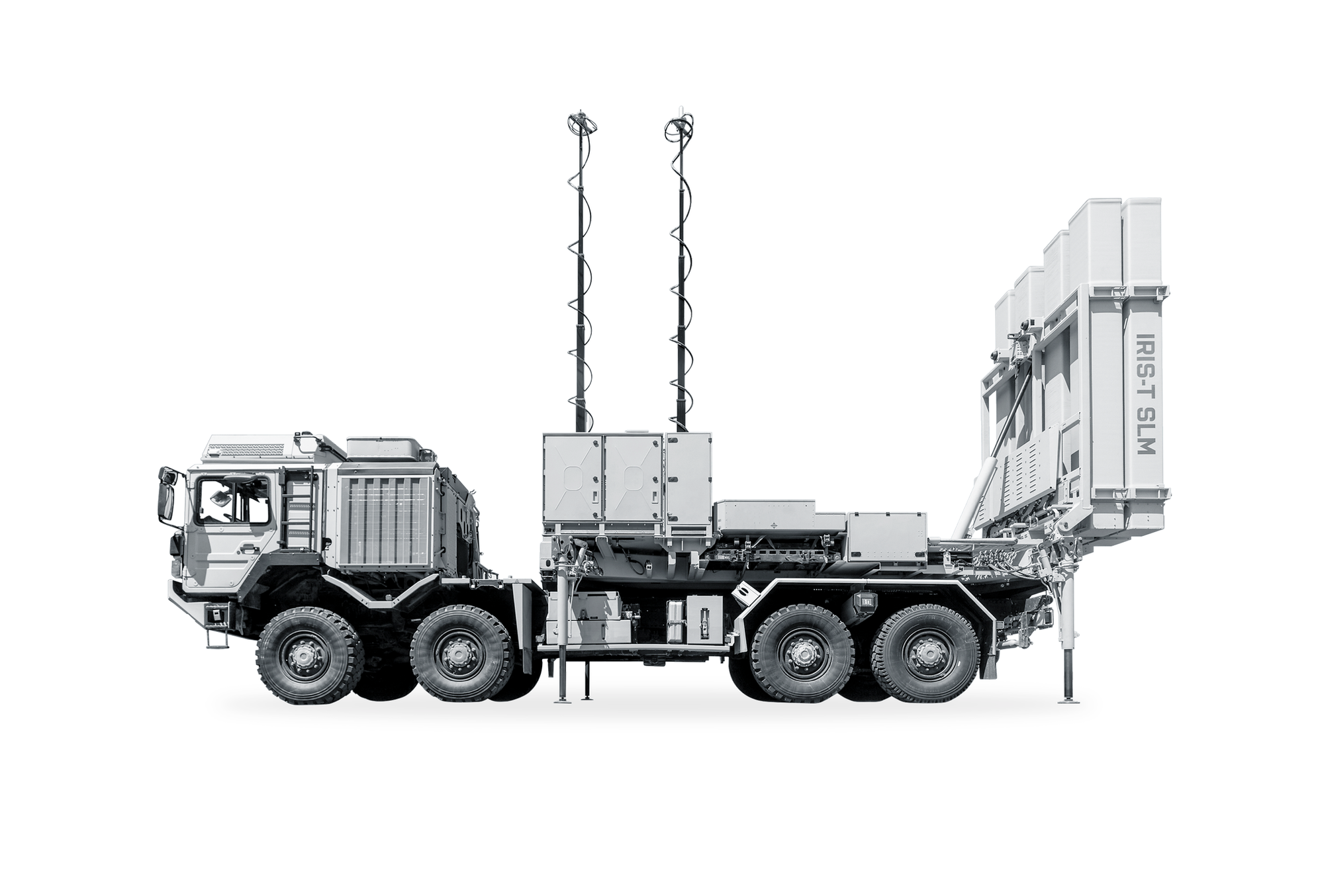
Key Components of the IRIS-T SLM System
The IRIS-T SLM system comprises several components that work seamlessly to ensure operational success:
Missile Launcher Units: The launcher units house the missiles, ready for deployment at a moment’s notice. Each launcher can hold multiple IRIS-T SLM missiles.
Command and Control Unit (CCU): The CCU coordinates the system, analyzing threats and assigning targets to specific missiles.
Surveillance Radar: High-performance radar systems detect, track, and classify incoming threats, providing real-time data to the CCU.
Missiles: Equipped with advanced infrared imaging seekers, the missiles ensure accurate targeting and destruction of aerial threats.
How the IRIS-T SLM Enhances Modern Defense Capabilities
The IRIS-T SLM’s cutting-edge technology provides significant enhancements to air defense capabilities. Here’s how it excels:
Versatility: Effective against a wide range of aerial threats, from high-speed aircraft to low-signature drones.
Advanced Infrared Imaging: The missile's seeker can accurately distinguish targets, even in complex environments or under electronic countermeasures.
Network Integration: Integrates seamlessly with broader air defense networks for layered protection.
Cost-efficiency: Built on existing missile technology, offering a cost-effective solution.
Ease of Deployment: Modular and mobile design enables rapid deployment and repositioning.
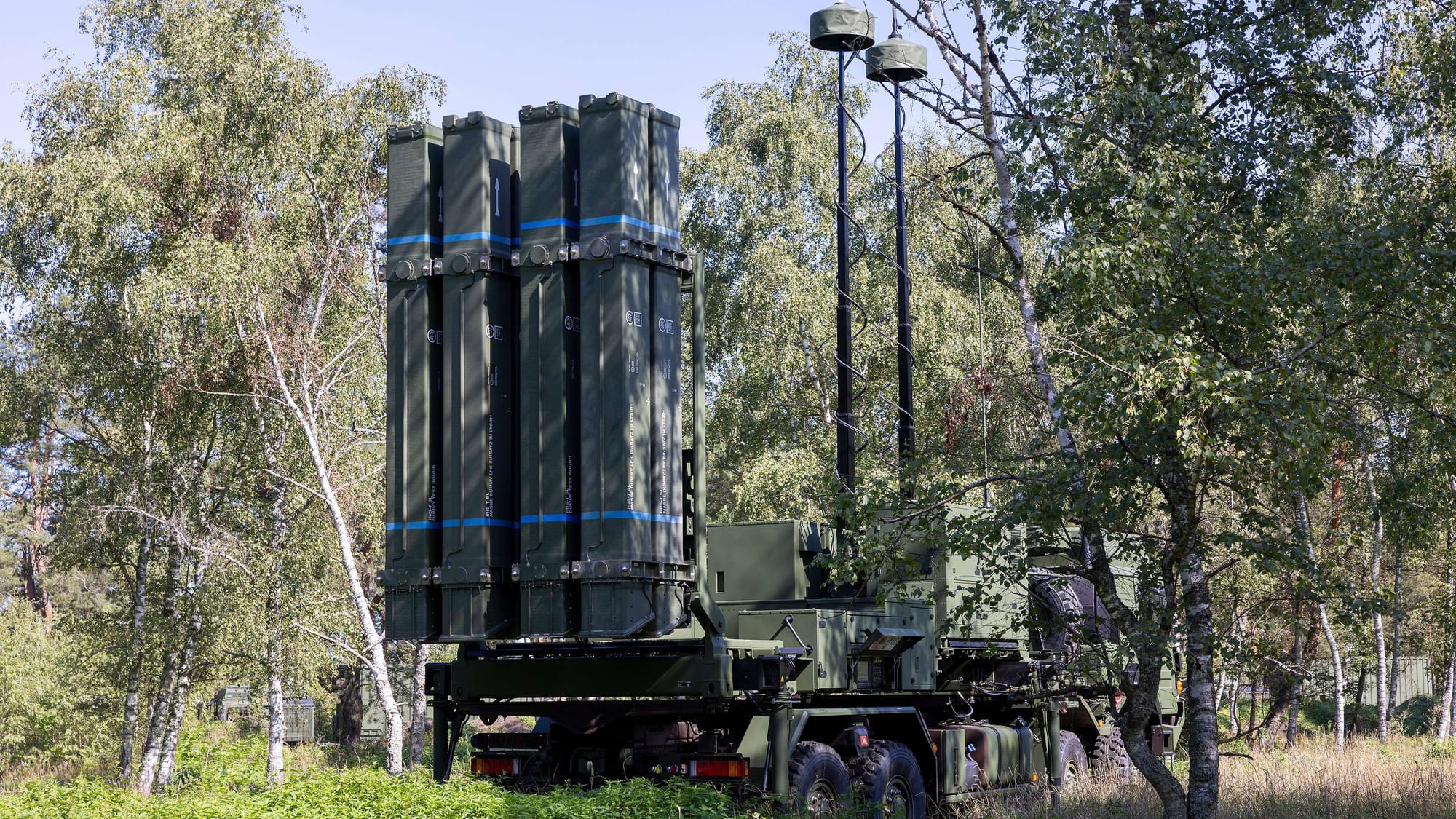
The IRIS-T SLM is also a key component of Germany's air defense initiative, the European Sky Shield Initiative (ESSI). The goal of this joint European procurement is to strengthen air defense capabilities within NATO (North Atlantic Treaty Organization). Read more about the initiative here:
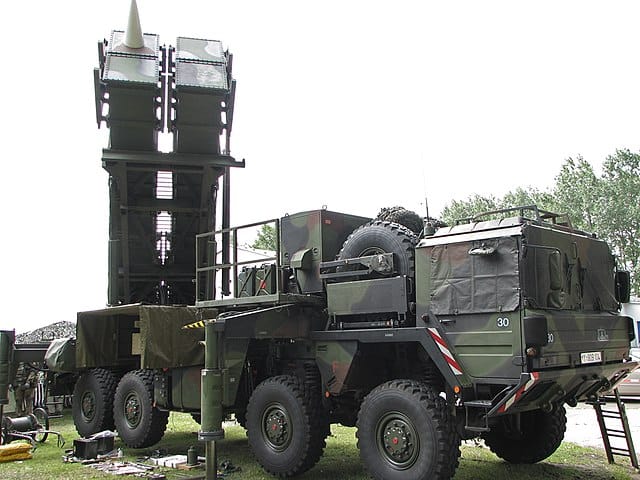
IRIS-T SLM Compared to the U.S. Patriot System and the Russian S-400
When compared to systems like the American Patriot missile or the Russian S-400, the IRIS-T SLM demonstrates several distinct advantages.
Unlike the Patriot, which is optimized for longer-range engagements, the IRIS-T SLM excels in precision targeting and cost efficiency for medium-range threats.
Against the S-400, the IRIS-T SLM offers a more modular and scalable design, making it better suited for nations seeking flexible and easily integrated air defense solutions. However, the S-400’s longer range and multiple engagement capabilities might outshine the IRIS-T SLM in scenarios requiring strategic area-wide coverage.
IRIS-T SLM Applications: Protecting Critical Infrastructure and Military Assets
This advanced system is utilized worldwide for both military and civilian defense purposes, including:
Military Air Defense: Protecting bases, troops, and infrastructure from aerial attacks.
Civilian Infrastructure Defense: Safeguarding airports, power plants, and critical installations.
International Missions: Supporting allied peacekeeping missions with reliable air defense.
Critical Asset Protection: Designed to shield strategic locations such as government centers and command hubs from aerial threats.
By focusing on medium-range defense, the IRIS-T SLM addresses gaps that might be less efficiently managed by systems like the longer-range Patriot or S-400, making it a complementary addition to multi-layered air defense strategies.
Conclusion
The IRIS-T SLM is an important tool in modern defense. It offers high precision, adaptability, and effectiveness, protecting airspace and key assets from many threats. Compared to other systems, it is cost-efficient, accurate, and scalable, making it a great choice for countries needing flexible and layered air defense.
Großwald Systems brings you in-depth profiles of systems like the IRIS-T SLM, highlighting the technologies that build global security. Stay tuned for more insights into the innovations driving modern defense strategies.
FAQs About the IRIS-T SLM System
What threats can the IRIS-T SLM defend against?
The IRIS-T SLM can counter fighter jets, helicopters, drones, and cruise missiles.
How does the IRIS-T SLM compare to other surface-to-air missile systems?
It offers superior precision, scalability, and cost-efficiency for medium-range defense scenarios.
How does the IRIS-T SLM compare to the U.S. Patriot System?
The Patriot missile system specializes in long-range interception but often comes at a higher cost and with reduced accuracy in medium-range scenarios, where the IRIS-T SLM excels.
How does the IRIS-T SLM compare to the Russian S-400 System?
While the S-400 boasts longer range and multi-engagement capabilities, it is less adaptable and scalable than the IRIS-T SLM, which offers superior flexibility for diverse deployment needs.
What is the range of the IRIS-T SLM?
The IRIS-T SLM has a medium-range capability, up to 40 km, effectively covering critical areas.
How does the IRIS-T SLM handle electronic countermeasures?
Its advanced infrared imaging seekers are resistant to modern jamming techniques, ensuring consistent performance.
Großwald Systems brings you in-depth profiles of systems like the IRIS-T SLM, highlighting the technologies that build global security. Stay tuned for more insights into the innovations driving modern defense strategies.
Want to explore more about cutting-edge defense technologies? Have a look at out our related articles.
